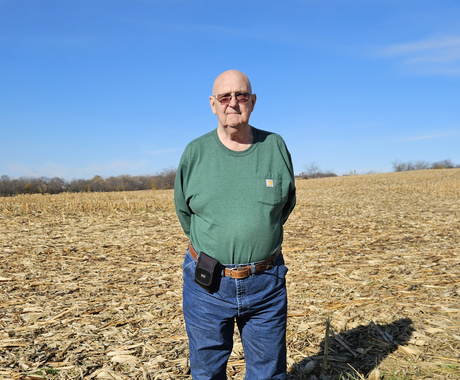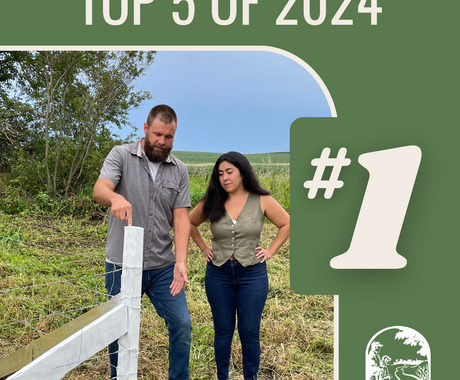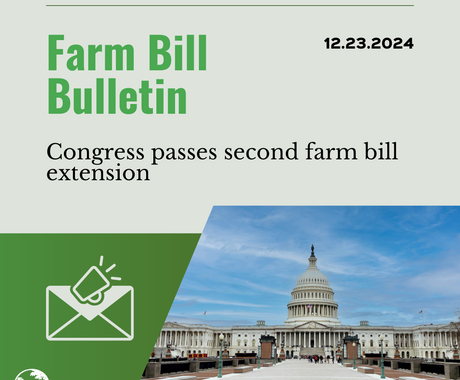By John Crabtree, former staff member
Printed as a guest column in The Gazette, Cedar Rapids, Iowa, on Friday, Sept. 9, 2016.
For over three decades, the Center for Rural Affairs has worked alongside farm and rural organizations, U.S. Senators and U.S. Representatives to reform federal farm subsidies. The impetus for those reform efforts has been the negative impacts unlimited farm subsidies have on beginning farmers, and on small and mid-sized family farms. We argue that when subsidies are unlimited in nature — with no cap on the amount of subsidies that the largest farms can receive — they provide the nation’s largest and wealthiest farms with additional financial resources to bid up land costs and drive their smaller neighbors out of farming.
Setting a limit, or cap, on federal farm payments has always enjoyed widespread and bipartisan support in Iowa, with support and opposition most often breaking along the lines of northern farm states versus southern farm states. At its heart, however, the fight over farm payment limits has always been a philosophical disagreement about the purpose of farm programs. Proponents of limits believe that there is a role for the federal government in helping small and mid-size farms manage risk. Opponents of limits believe that the federal government should subsidize farm operations on every acre, irrespective of size.
The 2014 Farm Bill made significant changes to the farm safety net programs, due in large part to public pressure to reform farm programs and the decline in popularity among both farmers and non-farmers of so-called direct payments. Direct payments were received by farmers based upon historic production levels of specific “commodity crops” (e.g. corn, soybeans, wheat, cotton, rice, etc.). These subsidies were distributed irrespective of current production levels, commodity prices, or profitability of a particular farming season.
The 2014 Farm Bill discontinued the direct payment program at USDA, a move that was heralded as significant reform. In place of direct payments, Congress placed considerable emphasis on federal crop and farm revenue insurance programs as the new safety net for farmers. We consider this move more sleight-of-hand than reform.
The shift from direct payment to insurance subsidies has not turned out to be a revolutionary change. What was described as significant reform in the method of providing financial support to farms simply continues to subsidize changes in farm ownership and production methods that are both socially and environmentally destructive.
As with unlimited farm program payments, there is strong evidence that unlimited crop insurance subsidies are placing upward pressure on land prices and cash rental costs. These price impacts work against the small and mid-sized family farmer who have always been rhetorically positioned as the beneficiaries of federal farm subsidies.
Michael Duffy, Professor Emeritus of Economics at Iowa State University, has explored the impact of unlimited crop insurance subsidies on land values and land rental costs. Professor Duffy identified several ways in which the program likely impacts land costs. His findings demonstrate that crop insurance subsidies have significant economic value to producers and, consequently, subsidies get bid into land prices. When those crop insurance subsidies also serve to reduce risk, they have an even greater value and greater potential to drive up land costs — creating a competitive disadvantage for small and mid-sized farms and acting as a barrier to entry for the next generation of farmers seeking to get a started in agriculture.
A battle over U.S. agricultural subsidies has raged for a generation. Although some reforms have been won during that time, many of the most crucial reforms have failed. Federal farm subsidies have shifted to federal crop and revenue insurance premium subsidies and this Congressional sleight-of-hand has eroded many of the hard-fought victories and small reforms that have been realized.
As federal crop insurance has expanded into a new role as the flagship federal safety net program for farmers, the inequities associated with crop insurance have grown.
As Iowa lawmakers look toward a new farm bill debate in 2017, they have an opportunity to extend real and effective payment limits to the crop insurance program. Doing so will put small and mid-size farms on a more even playing field, and help curb the consolidation of agriculture driven by the nation’s largest and wealthiest farms.
Reform is possible. Will our lawmakers do the right thing?





